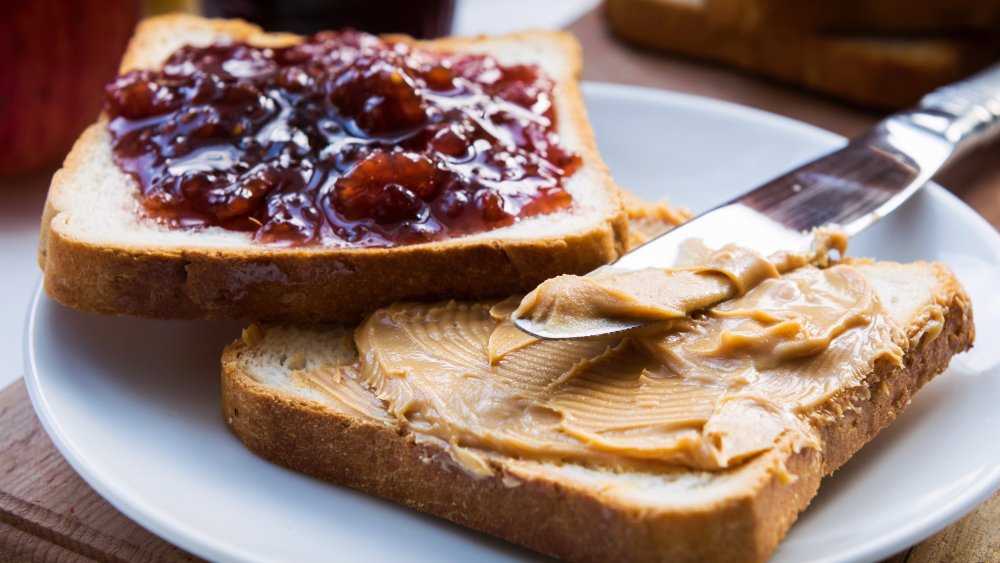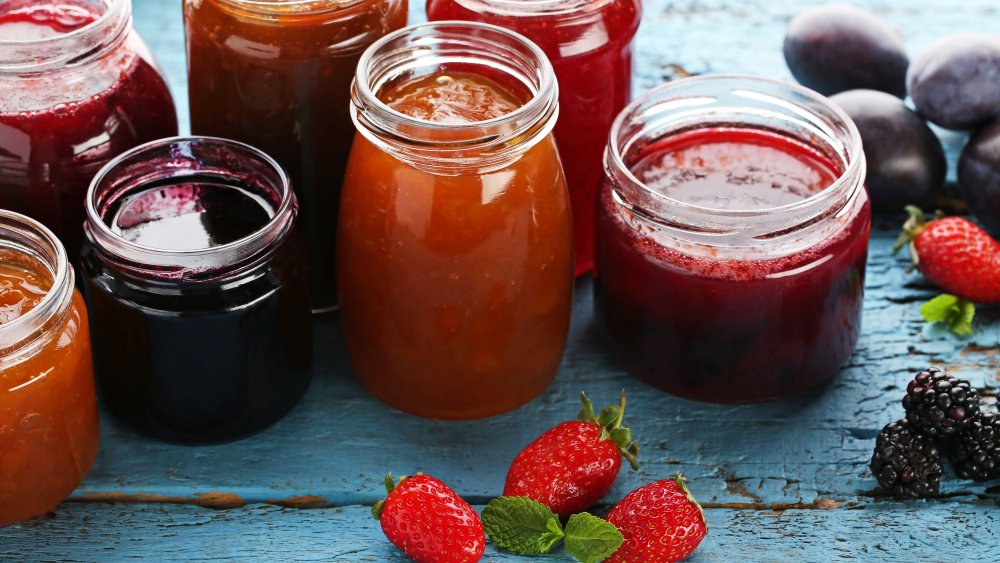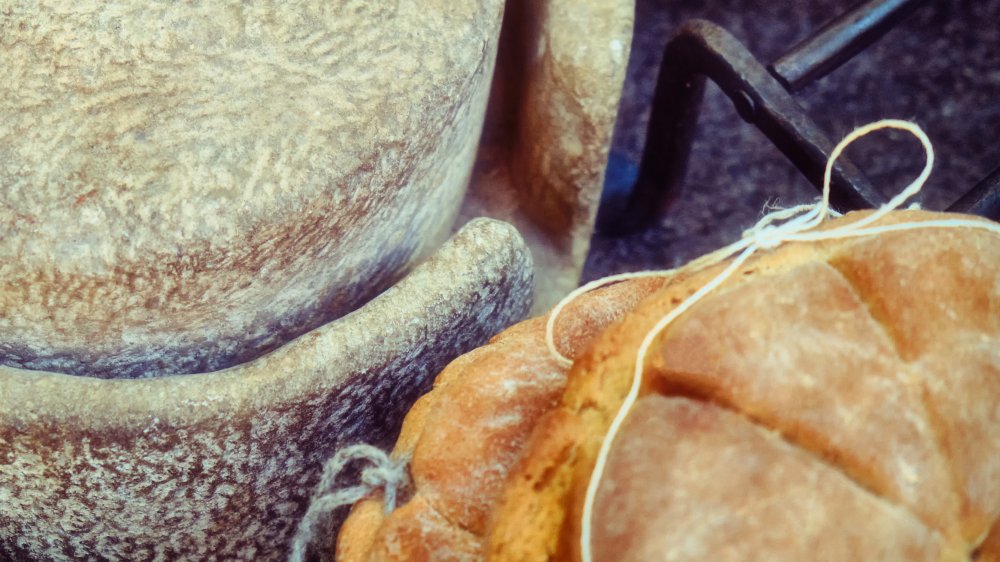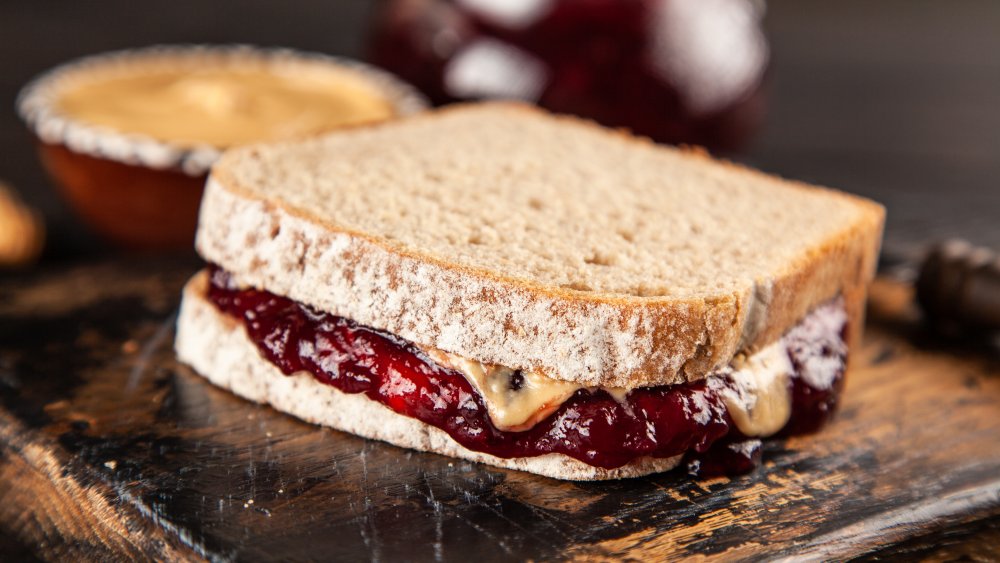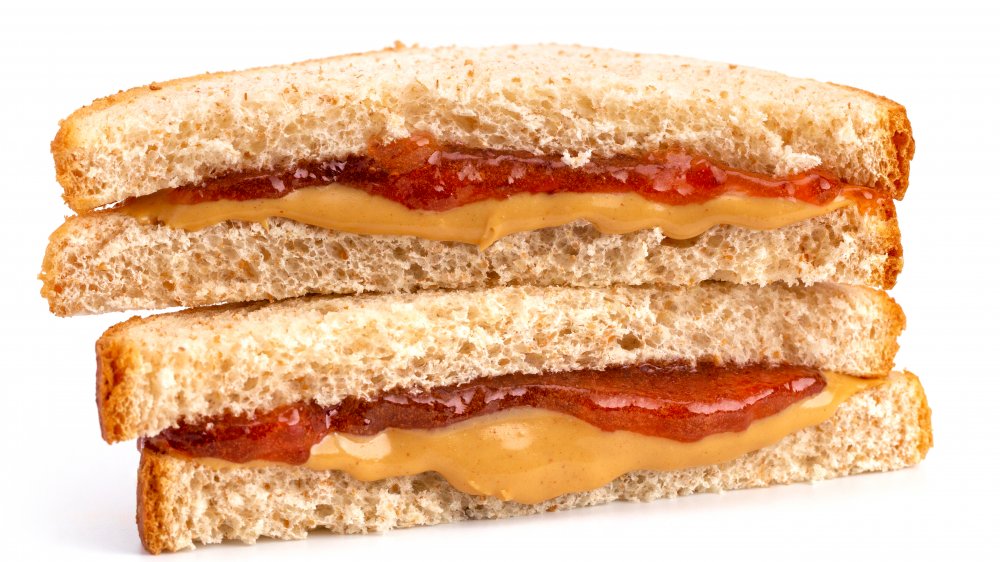The Untold Truth Of The Peanut Butter And Jelly Sandwich
There are few matches that are made in food heaven in the same way as the peanut butter and jelly sandwich. But like all good partnerships, it took a while before PB&J became a thing, particularly since all of its component parts weren't invented at the same time.
Peanut butter is the youngest of the three ingredients. Peanut butter appears to have several fathers. Credit for the invention of peanut paste goes to a physician named Ambrose Straub, who figured out peanut paste would be ideal his older patients, because they had trouble swallowing, or bad teeth. But the actual patent for the process of making peanut butter went to John Harvey Kellogg (the same Kellogg whose name appears on our cereal boxes), who debuted his yummy product at the 1893 Chicago World Fair.
About a decade later, in 1904, Straub managed to convince a food company to make his paste — and they took their product to the St Louis Worlds Fair where it became a huge hit. Meanwhile, during this time, peanut paste was considered a food for the elite, and it was served on toast triangles and soda crackers at upscale tea rooms across New York, where it was served with watercress or pimento on toast triangles and soda crackers (via National Peanut Board).
Fruit growers have made jam since the 16th century
Did you know there is a difference between jam and jelly? Jams are fruit and sugar while jellies are made with only fruit juice. Jam predates peanut butter by a few hundred years, as pickling fruit and vegetables allowed them to be edible well past their season. Serious Eats says jam making actually dates back to the Greeks, who used honey to preserve their quince (an ancient fruit which The Kitchn says was used in ancient Rome, Turkey, and southeast Asia). Sugar was not used as a preservative in Europe until it reached the continent from the new world in the 16th century.
Grape jelly became a thing in 1917, when a man named Paul Welch (name sound familiar?) received a patent for pulverizing grapes and turning it into jelly. His first product was Grapelade made with Concord grapes, and was used by American troops during World War I. Returning soldiers would spread Grapelade on their bread. Yum? Are you beginning to see the, well, the beginnings of the peanut butter and jelly sandwich?
Bread has been around for thousands of years
It will come as no surprise that bread is far older than jam (even the ancient Greek quince and honey version) by a few thousand years, but sandwiches didn't become a thing until 1762 when John Montagu, the Earl of Sandwich, asked his cook to prepare him a meal that could be eaten at the gambling table, without disrupting the gambling, of course! He is said to have enjoyed the concoction so much he ate it everywhere, and introduced the idea of plonking meat between two slices of bread to London society.
The "sandwich" was a thing in England by the time the American Revolution came around, yet in spite of this, American cookbooks didn't feature recipes for sandwiches until 1815 (via History). So, when would the idea of the classic peanut butter and jelly sandwich finally take hold?
The idea of making a PB&J crystallizes in 1901
The idea of bringing peanut butter and jelly together between slices of bread didn't take hold until November 1901, when an issue of the Boston Cooking School magazine featured a writer, Julia Davis Chandler, who had the genius idea of making a sandwich using a filling made with peanut paste and jelly. She wrote: "For variety, some day try making little sandwiches, or bread fingers, of three very thin layers of bread and two of filling, one of peanut paste, whatever brand you prefer, and currant or crab-apple jelly for the other. The combination is delicious, and so far as I know, original" (via Reader's Digest).
Still, peanut paste was sticky and thick, so the sandwich would improve when the peanut grinder mill was invented in 1903. Skippy peanut butter came to market in 1922.
Sliced bread made sandwiches more accessible to American families
But a PB&J wouldn't be a PB&J without sliced bread, and for that we have a jeweler, Otto Rohwedder to thank. Rohwedder overcame a fire that destroyed his early prototype, as well as his blueprints (and the doubts raised by bakers, who didn't think sliced bread could stay fresh), to invent a machine that could slice bread. When he launched his contraption at the Chillicothe Baking Company in 1928, he did it to rave media reviews. According to the Chillicothe Constitution-Tribune, the machine produced slices that were "so neat and precise are the slices, and so definitely better than anyone could possibly slice by hand with a bread knife that one realizes instantly that here is a refinement that will receive a hearty and permanent welcome." It didn't take long before soft, white loaves were being produced commercially by companies including the now-iconic Wonder Bread (via History).
Thanks to sliced bread, peanut butter and jelly sandwiches were able to come into their own during World War II, when U.S. military rations featured menus that recommended PB&J spread on pre-sliced bread to boost energy quickly and effectively. After the war ended, the soldiers went home, taking the delicious idea with them, which is when, thankfully, the sandwich established its rightful home in American kitchens and school lunchboxes.
